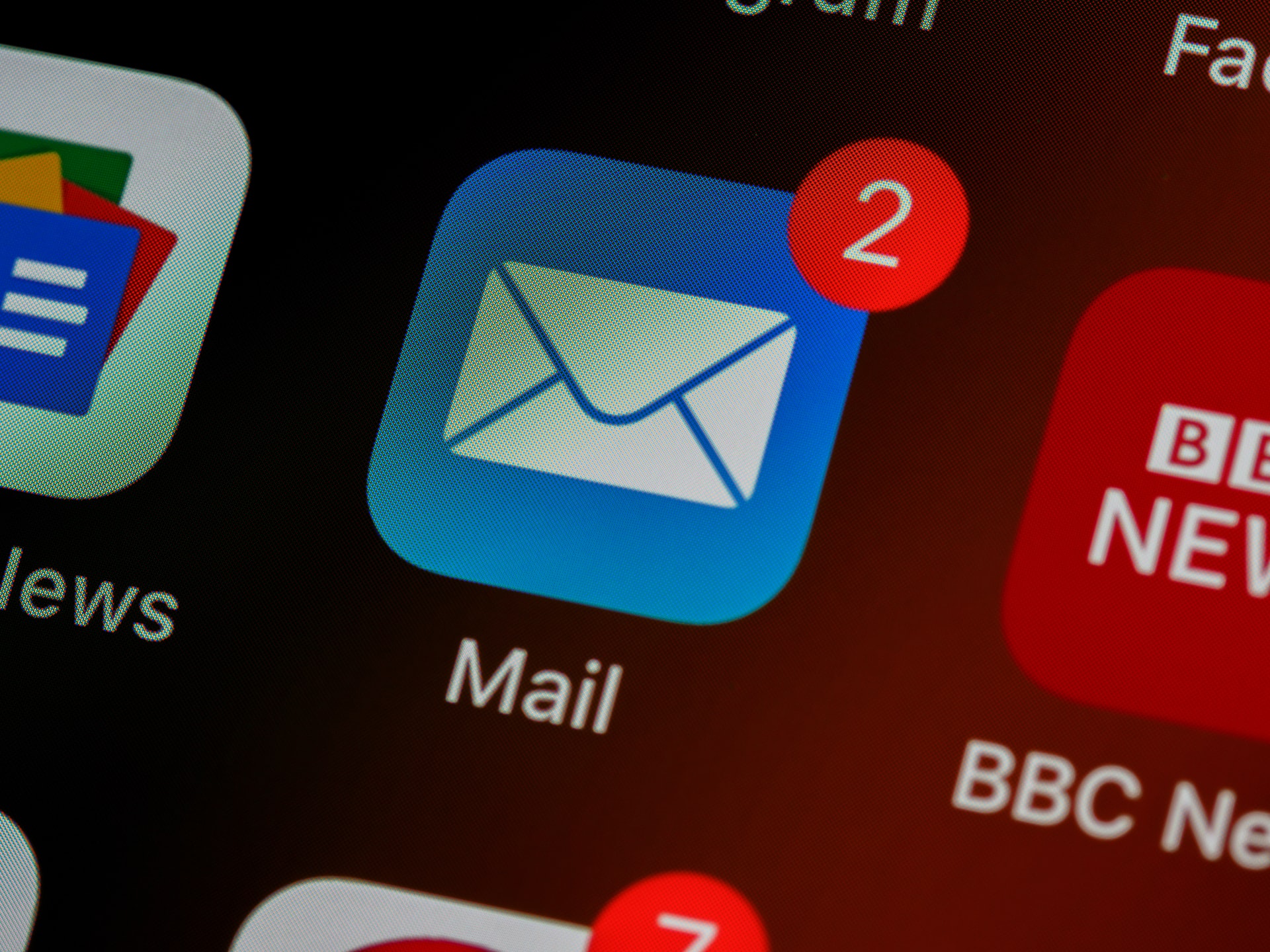Is it a good idea to create an email course or should you invest your time and energy into something else?
Let’s talk about it.
What Is an Email Course?
First of all, what the heck is an email course?
An email course is a series of emails that you send to subscribers to teach a topic. Email courses can be in-depth or surface level. They can cover an array of ideas or dig down into one idea.
The standard is to cover one lesson per email and send one email per day.
Although some courses may contain 30 lessons (and spread over an entire month), the majority of email courses contain between three to seven lessons.
Email courses have two goals.
The immediate goal is to educate the consumer without overwhelming them. You introduce a problem that your prospective customer faces, give them what they need to understand it, and then present your solution as the answer to their problem.
This meets the second goal. Your ultimate purpose in creating an email course is to make a sale. If your email course is successful, that’s exactly what will happen.
Email courses are commonly offered as a lead magnet, i.e. a freebie you offer in exchange for signing up to your email list. However, not all email courses are used as lead magnets. Email courses can also stand alone as their own product. You can create a class and send lessons out via an email course. Or you can add an email course to your onboarding process so that new customers know exactly how to use your product and its features.
Why Create an Email Course?
The answer is money, but there are a lot of ways to make money. So why specifically create an email course as your path to making money? Here are 12 benefits to creating your own email course:
Benefit #1: Email Courses are Scalable
Whether you’re educating 10 prospects or 10,000, you only need to create one course. That same email course can be scaled to reach more prospects as they find out about you without you having to do any additional work.
Benefit #2: Demonstrate Value
An email course starts your relationship off with your prospective customer on a good note. Your email course will prove to your prospective customer that you’re a valuable resource. This is the exact message that you want to communicate to prospects.
Benefit #3: Increase Your Interactions With Your Prospective Customers
The more you interact with prospective customers, the better your chances of closing a sale.
People don’t buy on the first interaction. Studies show that it takes 9 to 12 interactions before a prospective customer feels ready to buy from you. Each email lesson that you send acts as a separate interaction, and nudges you closer to closing.
Benefit #3: Build Trust
Your emails aren’t just interactions. They’re also trust-building moments. By delivering non-stop value in the form of your educational emails, you’re proving to your prospective customers that they can trust you.
Benefit #4: Can Be Used Multiple Times
Not only can your email course be scaled, it can also be used more than once. Depending on your content and your audience, you may find it useful to limit when and how many people can take your course. Close registration and then re-open it at a later date. This is a popular strategy for paid email courses, specifically.
Benefit #5: Easy to Create
In the span of a weekend or a coffee-fueled, supercharged afternoon, you can create a valuable email course. Email course creation is easy to do because you’re working with text only. There are no fancy graphics or HTML to slow you down. An email course is equivalent to three to seven blog posts. If you already maintain a blog, you can create an email course easily.
Benefit #6: Feel More Personal
There’s something about receiving content in one’s inbox that feels more personal. Perhaps it’s because the inbox is more familiar. Or maybe it’s that your website is so unfamiliar. Whatever the case, an email course seems more individual.
Benefit #7: Builds Your Email List
How can we forget this benefit? The money’s in the list. A valuable email course can entice a visitor to join your email list.
And also keep in mind that nine out of 10 site visitors will never return to your website. If you hook them with an email course, you’ll have access to their inbox where you can then continue to market to them and woo them back to your website so you can eventually close the sale.
Benefit #8: Teaches Your Subscribers to Open Your Emails
If you start off your relationship with an email course, you teach your subscriber to faithfully open your emails.
This will extend beyond your email course and make it more likely for your subscriber to open your future emails. Once they’re in the habit of opening your emails, they’ll continue to do so, especially if you’re careful to provide continuous value.
Benefit #9: Doesn’t Overwhelm the Reader
You may be thinking, Why can’t I just create a blog post for the topic?
Lengthy blog posts can be tiring for your reader. Who has the patience to sit and read a thorough but thoroughly overwhelming blog post on a topic?
Instead, an email course drips out the content over a span of days (or longer). This gives your reader a natural break. It also gives them a chance to digest what they’ve learned and maybe even apply it if you’ve given a set of actionable instructions.
Benefit #10: Shareable
Email courses are shareable, especially the free ones. Encourage your subscribers to tell others about your email course. Be sure to provide a link to discourage them from forwarding individual emails, and also so that you can grow your list.
Benefit #11: Generate Demand
While the majority of your email course should be educational, the tail end of it can be promotional. This is your opportunity to generate demand for your product because it may be your prospective customer’s first introduction to your product. Perhaps they signed up for your email course without even being aware of what you sell. Use your email course to showcase your products.
Benefit #12: No Risk
If you create an email course and no one signs up, you’re only out time and effort, but it’s not a big loss in the grand scheme of things. If your email course truly doesn’t land, you can then repurpose its content into a blog post series, an ebook to sell on Amazon, or content for YouTube videos.
How Do You Create an Email Course From Scratch?
Now that we’ve discussed all of the benefits of creating an email course, let’s discuss how to do it.
Start With Your Audience
Identify with your audience. What challenge can you help them understand and solve? What do they already know about that challenge? What do they need to know to solve it?
Define Your End Goal
What is your desired outcome at the end of the email course? Should your subscriber start a trial? Should they set up a meeting? Should they buy?
Your goal will dictate what content you should include because it will ultimately guide the user to one course of action.
Choose the Appropriate Length For Your Course
This answer varies. But remember to resist the urge to go beyond your reader’s comfort level. Your objective shouldn’t be to give them too much but instead you should give them just enough to accomplish your end goal.
This generally translates to 1,000 words or less per lesson and 10 lessons or less per course. You can always link out to more in-depth content whenever appropriate.
Create Content
Start with an outline. An outline ensures that you’ll hit all of the most important points in your course and minimize redundancy.
Then start writing your course. Write it like you would a blog post – Make it friendly, actionable, and to the point. If your course discusses topics that you’ve already written about, review that content to see if you can re-work it as part of your email course.
The typical structure of an email course includes:
A confirmation and welcome email – This thanks the new subscriber and introduces them to your email course. You’ll detail when you’ll send emails and the topics of each lesson that you’ll cover.
The lessons – This is the meat of your email course. Here you’ll educate your prospect on the topic.
Product introduction – This email comes at the end of your lessons and generates demand for your product. It presents your product as the solution that your prospect has been looking for.
Close – End your email course with a thankful note and a soft push towards your end goal.
Give Away Your Best Stuff
Don’t try to hold anything back because your email course is free. Your email course should be all value all the time. Even though you’re giving it away for free, you’ll never be able to give away the entire breadth of your knowledge in 1,000 words or less. So be sure to pack your course with your best stuff to encourage your prospective customer to trust you and eventually purchase from you.
Additional Resources
Before you go, check out these related resources:
- 10 Easy Ways to Improve Your SaaS Email Marketing Strategy
- Essential Growth Hacking Tips That You Can Implement Today
- Crisis-Proof Your Subscription Business With These Tips


